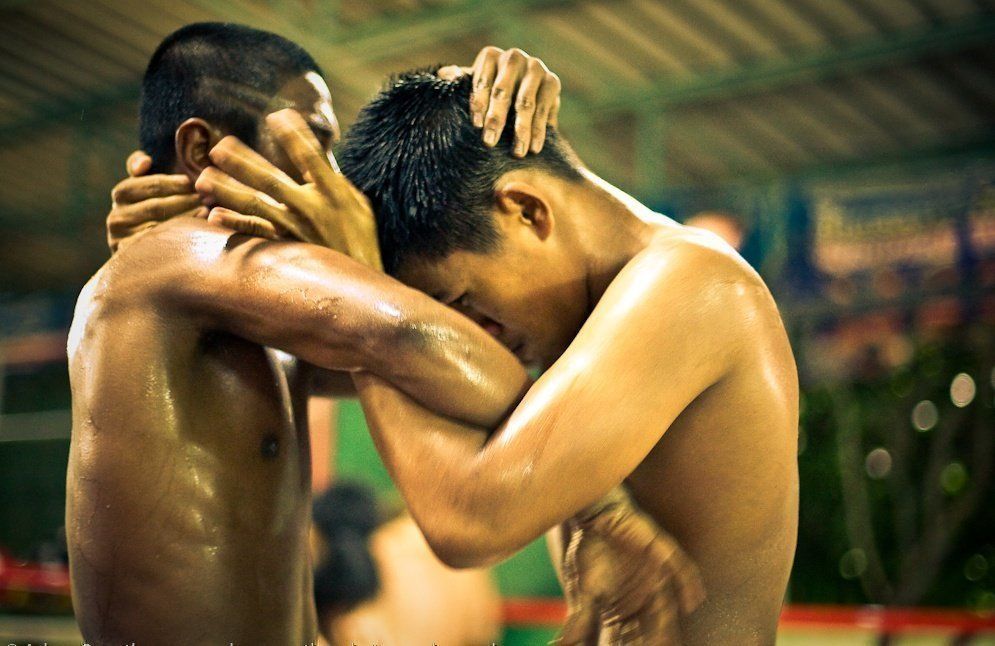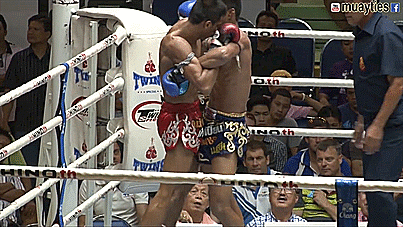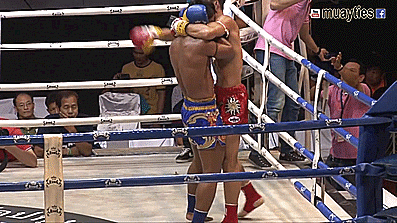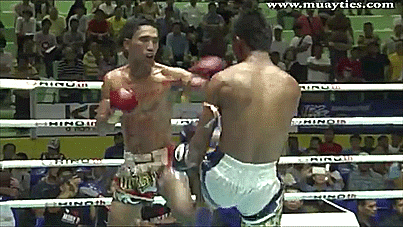4 Essential Tips For The Muay Thai Clinch

Guest post by Evolve MMA, Asia’s premier championship brand for martial arts. It has the most number of World Champions on the planet. Named as the #1 ranked martial arts organization in Asia by CNN, Yahoo! Sports, FOX Sports, Evolve MMA is the top rated Muay Thai gym in Singapore.
In Muay Thai, one of the best ways to close the distance between you and your opponent is the clinch. It is the closest distance two fighters can get in a fight and still engage. As ideal as it may sound, learning how to clinch can prove to be quite tricky, especially if you’ve just started sparring Muay Thai.
The clinch is a technical aspect of Muay Thai wherein you must hold your opponent in order to launch your attacks, or, most commonly, knee strikes. If you are facing an aggressive opponent, the clinch is a great option to neutralize their attacks and close the distance. To hold your opponent, you have a variety of options such as the double collar tie, single collar tie, bear hug or double underhook clinching positions.
The Double Collar Tie
To get into the double collar tie position, you must use your hands to pull your opponent’s head down and use your elbows to lock his head and shoulders. Doing so will allow you to control him and prevent him from using elbows. While performing the double collar tie, make sure to squeeze your elbows together so your opponent cannot escape. You can also put your hand slightly above the back of your opponent’s head for better control.
The Single Collar Tie
Use your arms to pull your opponent’s head down and slightly lift your elbows to lock his shoulders in place. From here, use your lead hand to pull on your opponent’s shoulder downward while your elbow locks his forearm and biceps. One arm should be on your opponent’s neck, while the other one should be on his shoulder.
Double Underhook
If you are faced with a taller opponent, the double underhook hold is a great way to control your opponent. You will usually use the double underhook if you are able to pummel your outside arm inside. If you are looking to throw your opponent, this is a great way to do it. However, if your double underhooks aren’t working, you can posture lower and transition to a bear hug. The bear hug is very similar to the double underhook hold. However, it requires you to position your body lower, which allows you to control your opponent’s hips to take him to the ground.
Now that you’ve gotten your opponent in a clinch, today, Evolve Daily Shares 4 Essential Tips For The Muay Thai Clinch:
1) There Are Many Ways To Attack Your Opponent In The Clinch
Although knees are the most common form of attack from this position, you can also use punches and elbows. Being in such a close range only allows for these types of attacks. However, the clinch can also be used to off-balance your opponent with a sweep or throw, which you can use to tire your opponent or set up your next attack.
2) Stay In Control
The person who is stronger in the clinch dictates where the rest of the fight goes. Thus, you must never give up control at any point in time. To prevent your opponent from taking control of the fight, you must focus on having 2 points of control at all times such as the head and one of your opponent’s arms.
3) Don’t Let Your Opponent Control Your Neck Or Your Head
ONE Superstar Amir Khan practices his knees in the clinch with multiple-time Muay Thai World Champion Penek Sitnumnoi.
The moment your opponent controls your neck or your head, they control your balance. This means that they also control your ability to defend and attack. To prevent this from happening, maintain your posture and move your hips close into your opponent’s hips. You can also maintain a 50-50 stance with your legs slightly wider than shoulder width.
4) Prevent Your Opponent From Regaining His Posture
Multiple-time Muay Thai World Champion Dejdamrong Sor Amnuaysirichoke started MMA at 37 years old.
Just as important as it is to maintain your posture, you should also prevent your opponent from regaining his posture. When you have your opponent secure in your clinch, you should continue to control the neck and head, forcing your opponent into a broken posture. When your opponent’s posture is broken, it is easier for you to land knees because it is difficult for him to defend in this position. To defend, he needs to regain his posture by straightening out his neck/head.
Although clinching may sound intimidating, don’t worry. It takes awhile to become comfortable in the clinch and years to use it perfectly. As with all Muay Thai techniques, the only way to get better at using the clinch is by drilling it until it becomes second nature. When you’re more comfortable, you can try to incorporate it in your sparring sessions with minimal force. So go on, what are you waiting for? You too, can use the clinch!









